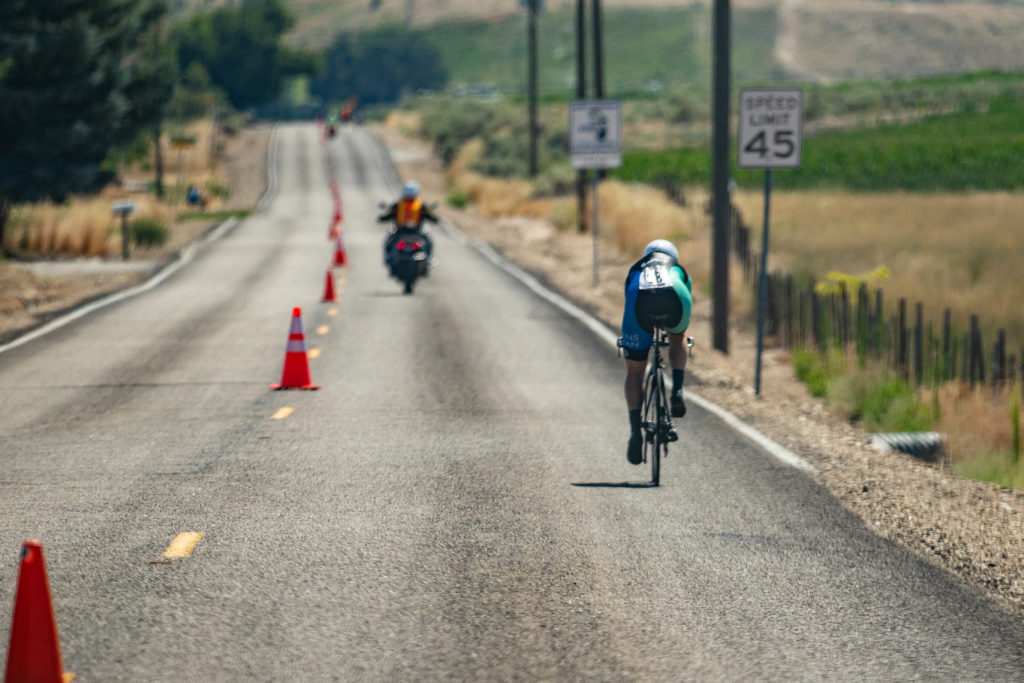CdA and Aerodynamics of Cycling

Photo courtesy of SnowyMountain Photography.
Seventy to ninety percent of the opposing force you face as a cyclist on a flat road is aerodynamic drag. Most of us have felt the experience of drafting before, or even a tailwind versus a head wind. This is the greatest drag we face on the bike and changing your aerodynamics has the greatest single effect on speed.
We spend hours, days, years worth of time searching for a hard fought 2% higher wattage FTP by changing our physiology. Why don’t we spend such time and money on our aerodynamic body positioning which has a potential greater increase in speed and efficiency? Your deep section carbon wheels are faster than your shallow alloy wheels, but that difference was costly and may represent the same difference in drag as 2cm narrower handlebars or lowering your head 3cm.
There are some good reasons we haven’t seen major breakthroughs in aerodynamic testing for the average or recreational rider. For starters, aerodynamic data is hard to come by. Objective aerodynamic data, calculated in watts of drag on a cyclist is hard to capture. In the past, we’ve only done these complex calculations in a controlled wind tunnel and buying time at such a facility can be an extreme cost. Many fitters, in poor form, will offer an aerodynamic fit with zero aerodynamic data. Without data, what you think may look or feel faster might be slowing you down. Lets get on with it and go into why you’re on this page.
In the last few years a few different companies have been developing aerodynamic meters. Looking at Argon 18, Notio, Aeropod, Garmin, Velosense, SwissSide. All these brands have produced some sort of device, similar to a nose sensor on an aircraft, that can measure airspeed. Controlling for airspeed, power, gradient, velocity, acceleration, we can calculate your drag coefficient or CdA, in watts, in real time, objectively. With those numbers, we can change your fit to become more aero. I can now fit you as a cyclist and leave you not only more comfortable and powerful like a good fit does, but unquestionably more aerodynamically faster. This data is not just one-run-and-a-full-trust-fall into an app for a company that has been around for one year making apps for their wind speed device. We do multiple runs and compare the data we collect from our Velocomp Aeropod+ to the Chung Method analyzed in GoldenCheetah. We take multiple runs with single controlled variances in fit, analyze the data, and come up with a complete plan to change the fit to become the most aero and powerful as possible for overall speed. This is a service that I am starting to offer at Bike Sports Bike Fit Studio.

Zack Allison earned his bachelor’s degree in Exercise Science at Colorado State University. As part of his education, he participated in many hands on exercise science practicum and internships, coaching many types of athletes, specifically cyclists.
Zack’s affinity for cycling started at the early age of 14 racing on the east coast. He quickly moved up the amateur ranks to race on the elite national circuit. This level of competition sparked his interest in exercise science, taking him to Colorado State University. While racing for his alma-mater and on various amateur teams he saw many podiums at the Collegiate Championships and Pro/Am events. Zack is currently living in Fort Collins, Colorado and has raced for Elevate Pro Cycling and currently races for Clif Bar. He also co-founded and operates Bike Sports, a bike fit studio, adventure experience, and gravel bike racing business.
Growing up with great mentors and coaches, Zack has a goal of paying it forward. He hopes to use his education and racing experience to bring success to Source Endurance and his clients.
